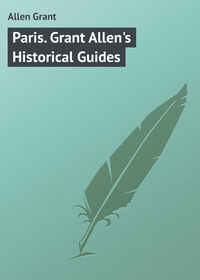Kitabı oku: «Paris. Grant Allen's Historical Guides», sayfa 15
Bir şeyler ters gitti, lütfen daha sonra tekrar deneyin
Türler ve etiketler
Yaş sınırı:
12+Litres'teki yayın tarihi:
02 mayıs 2017Hacim:
342 s. 4 illüstrasyonTelif hakkı:
Public Domain